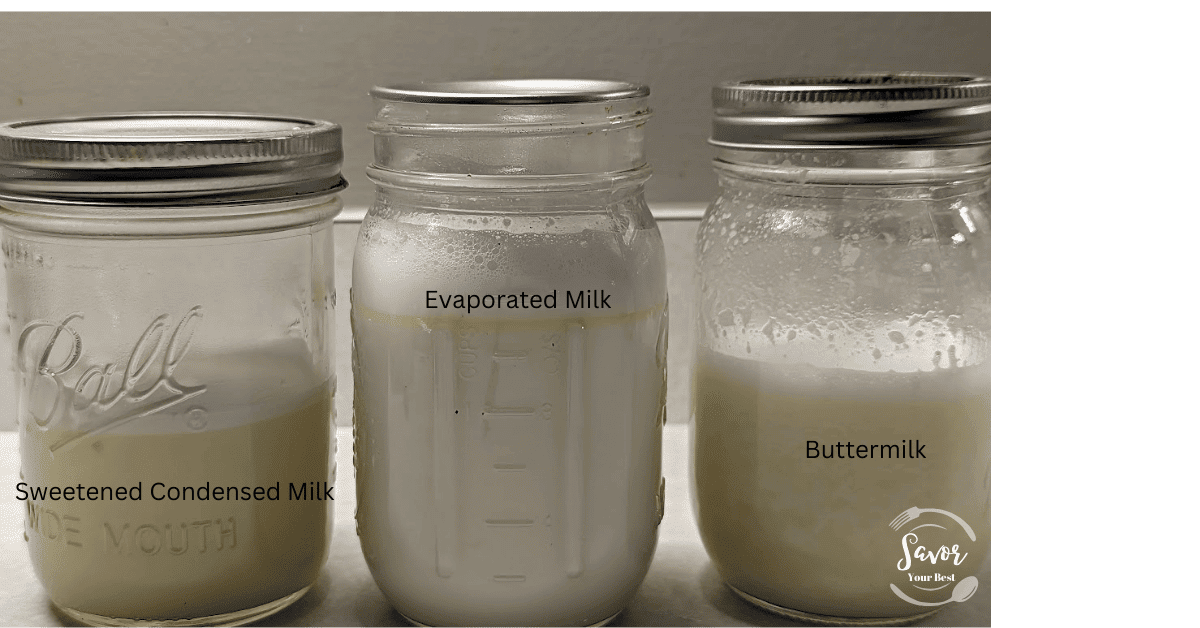Elevate Your Recipes with Freeze Dried Milk

We’re reader-supported. When you buy through links on our site, we may earn an affiliate commission.
Milk has long been a staple in American households, and its popularity remains significant. On average, an American family consumes about 18 gallons of milk per year, making it one of the most consumed beverages in the United States. Whether enjoyed as a refreshing glass, used in baking and cooking, or added to morning coffee, milk’s versatility, and nutritional benefits continue to make it a favorite choice for many families across the country.
Milk is not only prized for its role in baking but also for its nutritional value. It is a rich source of essential vitamins and minerals, including calcium, vitamin D, vitamin B12, potassium, and protein. Calcium is crucial for healthy bones and teeth, while vitamin D aids in calcium absorption. Vitamin B12 is essential for nerve function and red blood cell production. Potassium helps regulate blood pressure, and the protein in milk supports muscle and tissue growth. These nutrients make milk not just a valuable ingredient in the kitchen but also a vital component of a balanced diet, promoting overall health and well-being.
Freeze drying milk is a practical way to extend its shelf life, ensuring you always have a supply on hand, especially during times of uncertainty or emergencies. It retains most of the nutrients and flavor of fresh milk, making it a versatile ingredient in baking, cooking, and even rehydration for a glass of milk. Plus, it’s easy to portion and store, making it a valuable addition to your food preservation efforts.
What is Freeze Drying?
Freeze drying is a specialized food preservation technique that involves removing moisture from food items while maintaining their structure, flavor, and nutritional value. This process starts with freezing the food at extremely low temperatures. Next, the food is placed in a vacuum chamber where the frozen moisture (ice) sublimates directly into water vapor, bypassing the liquid state. This gradual removal of moisture preserves the food’s quality, shelf life, and taste. Freeze dried foods are lightweight, have a longer shelf life, and can be easily rehydrated when needed, making them a popular choice for hikers, campers, and anyone looking to preserve food for extended periods.
Freeze drying at home has become increasingly popular, allowing individuals to preserve their favorite foods, create convenient snacks, and extend the shelf life of various ingredients. With the availability of home freeze dryers, the process has become more accessible to everyday consumers.
To freeze dry food at home, you’ll need a dedicated home freeze dryer appliance. These machines are designed to mimic the industrial freeze drying process on a smaller scale.
Home freeze drying offers several advantages, such as the ability to create your own long-lasting, preservative-free snacks, store seasonal produce, and have emergency food supplies readily available. It’s a versatile and cost-effective way to enjoy the benefits of freeze-dried foods without relying solely on store-bought options.

How to Freeze Dry Milk
Here’s how to freeze dry milk and keep it ready for various culinary needs.
To freeze dry milk, you’ll need:
- Fresh milk: Start with high-quality, fresh milk. Whole milk, skim milk, or any variation can be freeze dried.
- Freeze dryer Check out our buyers guide to learn which Home Freeze Dryer is best for you.
Here’s the process:
- Preparation: Pour the milk into the freeze dryer’s trays ( this is easiest once the trays have been placed in the freeze dryer). Make sure not to overfill them to allow for even drying. My trays allow for 4 cups of milk in each tray.
- Freeze: The machine will lower the temperature, causing the milk to freeze.
- Vacuum and drying: The freeze dryer creates a vacuum and slowly warms the milk, causing it to undergo sublimation—transitioning from a frozen state directly into vapor. This process removes moisture from the milk, leaving behind freeze dried milk powder.
- Monitoring: Home freeze dryers typically have built-in sensors to detect when the process is complete. However, it’s a good practice to double-check for any remaining moisture, ensuring the food is thoroughly freeze-dried.
- Packaging: Once the freeze-drying process is complete, transfer the freeze dried milk powder into airtight containers or vacuum-sealed or mylar bags to maintain its freshness. I usually will put some freeze dried milk into mylar bags for long-term storage. Then I will put some of the powder into ball jars for short-term use. I usually go through it within a couple of months.
By preserving freeze dried milk, you not only extend its shelf life but also unlock the ability to create culinary building blocks, ensuring your kitchen is well stocked, even in challenging times.
Freeze dried milk is a versatile ingredient that serves as the foundation for many essential dairy products in your kitchen. Freeze dried milk stands as a cornerstone ingredient in the versatile world of dairy products, offering an incredible range of culinary possibilities. With just this one base ingredient, you can create an array of dairy essentials.
With freeze dried milk, you can create evaporated milk, sweetened condensed milk, and buttermilk, which are indispensable in countless recipes. When these ingredients become scarce, or you need a convenient solution, having freeze dried milk on hand allows you to craft your own versions, ensuring that you can continue to prepare your favorite dishes.
Check out our related article to make Cream of Anything Soup Base with Freeze Dried Milk.

The Role of Milk in Baking
Milk, a liquid that is composed of water, fats, proteins, and sugars, is a cornerstone of baking. Its multifaceted role can be summarized in two essential functions: adding moisture and imparting fat. These two elements work together harmoniously to create baked goods that are tender, flavorful, and satisfyingly moist.
- Adding Moisture: One of the primary functions of milk in baking is to provide moisture to the recipe. This moisture prevents baked goods from becoming dry or crumbly. The water content in milk turns into steam during baking, creating steam pockets that contribute to the fluffiness and lightness of various treats, such as cakes, muffins, and biscuits.
- Imparting Fat: Milk contains a moderate amount of fat, typically around 3-4%. This fat content is enough to enhance the richness and mouthfeel of baked goods without overwhelming them. Fats, especially in the form of butterfat, play a crucial role in tenderizing the crumb structure of bread and imparting a velvety texture to cakes and cookies.
Milk Powder

Milk powder is a convenient pantry staple that plays a crucial role in baking. It offers the benefits of milk—moisture, fat, and flavor—in a concentrated, shelf-stable form. Milk powder blends seamlessly into dry ingredients, enriching the dough or batter with the creaminess and moisture that milk provides. It’s an excellent choice for bread, cakes, cookies, and other baked goods.
One of the advantages of using milk powder in baking is its ease of measurement and consistency. Unlike liquid milk, which is typically measured by volume (cups or tablespoons), milk powder is measured by weight. This precision in measuring by weight allows for greater accuracy in recipes, ensuring that the right amount of milk solids is added to the mixture. It eliminates the variability that can occur when measuring liquid milk, where factors like temperature and slight variations in cup sizes can affect the outcome of a recipe.
Milk powder is a baking staple that can enhance the taste, texture, and appearance of various baked goods.
In yeast breads, milk powder’s added protein and sugar contribute to a loftier, more tender crumb and a beautifully bronzed crust.
When baking sandwich bread, milk powder promotes a higher rise, while in flatbreads, it induces an irresistible tenderness.
For cookies, milk powder imparts a delightful chewiness and a subtle crust.
Freeze-dried milk can be used in place of milk powder or fresh milk in most recipes.
- For milk powder substitutions, simply add the same amount of freeze dried milk as the recipe calls for.
- For fresh milk substitutions, follow a 1:1 ratio of freeze dried milk to water.
Sweetened Condensed Milk

This luscious milk product is made by removing about 60% of the water from regular milk and then adding sugar. Sweetened condensed milk is exceptionally thick and sweet. It provides a concentrated creaminess and sweet, milky flavor to whatever you put it in, without all the excess moisture that you get from regular old milk. That makes it perfect for creamy things that you want to set to a near-solid, like key lime pie, fudge, magic bars, or caramel. Its high sugar content not only sweetens the recipe but also contributes to the browning and caramelization of baked goods, resulting in a delightful depth of flavor.
To make Sweetened Condensed Milk
¾ c freeze dried milk powder
¾ c sugar
½ c hot water
Blend all ingredients
Once cooled, transfer to an airtight container or glass jar.
Store in the refrigerator for up to two weeks.
Evaporated Milk

Evaporated milk is unsweetened and has a thinner consistency. It is created by gently heating regular milk to remove about 60% of its water content. Evaporated milk is often used to provide creaminess without the added sugar. It is a versatile ingredient in both sweet and savory recipes, from pumpkin pies to creamy sauces and soups.
Introduced in the mid-1800s, evaporated milk served as a practical alternative to fresh milk when it was unavailable. Many households keep a can or two in their pantry for emergencies like power outages.
To replace fresh milk with evaporated milk, simply add one and a half cans of water to each can of evaporated milk.
Diluted evaporated milk works well as a substitute for milk in coffee, hot chocolate, and cooked cereals like cream of wheat or oatmeal. While you may notice a difference when drinking a glass of diluted evaporated milk with chocolate chip cookies, it’s still a delightful pairing of chocolate chip cookies and milk!
To make Evaporated Milk
1 c freeze dried milk powder
1 ½ c warm water
Blend ingredients
Once cooled, transfer to an airtight container or glass jar.
Store in the refrigerator for up to two weeks.
Buttermilk

Buttermilk is a cultured dairy product with a slightly tangy flavor. Traditionally, it was the liquid left behind after churning butter from cream, but nowadays, it is typically made by introducing lactic acid bacteria to regular milk. Buttermilk acts as an acid in baking and pairs exceptionally well with baking soda (an alkaline leavening agent). This chemical reaction creates carbon dioxide gas, resulting in a rise in baked goods. Buttermilk is a key ingredient in classic buttermilk pancakes, biscuits, and red velvet cake.
Buttermilk offers a transformative power in baking. Its acidity not only helps with leavening but also contributes to the tenderness and flavor of baked goods.
- Leavening Agent: Buttermilk’s acidity reacts with baking soda to create carbon dioxide gas, which acts as a leavening agent. This process leads to a light, fluffy texture in pancakes, muffins, and cakes.
- Tenderizing Agent: Buttermilk contains enzymes that help break down proteins, resulting in tender baked goods. This is particularly noticeable in fried chicken, where buttermilk marinades work their magic by tenderizing the meat.
- Flavor Enhancer: The slight tanginess of buttermilk adds a pleasant, nuanced flavor to baked goods. It balances sweetness and enhances the overall taste profile. This is why buttermilk is the secret ingredient in many Southern-style biscuits and cornbread recipes.
To make Buttermilk
⅓ c freeze dried milk powder
1 c warm water
1 tbsp fresh lemon juice
Blend all ingredients
*let sit at least 10 minutes before use
Once cooled, transfer to an airtight container or glass jar.
Store in the refrigerator for up to two weeks.
Conclusion
Milk, in its various forms, is undeniably one of the most versatile and indispensable ingredients in baking. From providing essential moisture to imparting richness and flavor, milk elevates the quality of baked goods. Sweetened condensed milk, evaporated milk, and buttermilk each bring their unique characteristics to the kitchen, allowing bakers to create a wide array of delectable treats. Understanding the role of milk and its various forms in baking is the key to mastering the art of creating moist, tender, and flavorful baked goods. So, the next time you embark on a baking adventure, remember the convenience of freeze dried milk.
Another great dairy pantry staple is yogurt. Check out our recent guide to freeze drying yogurt.




